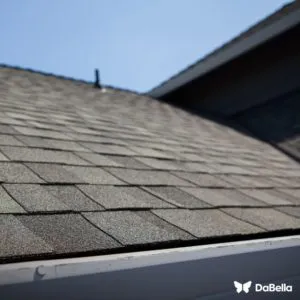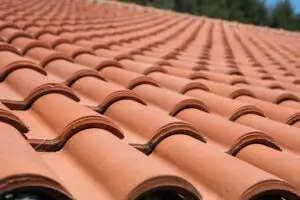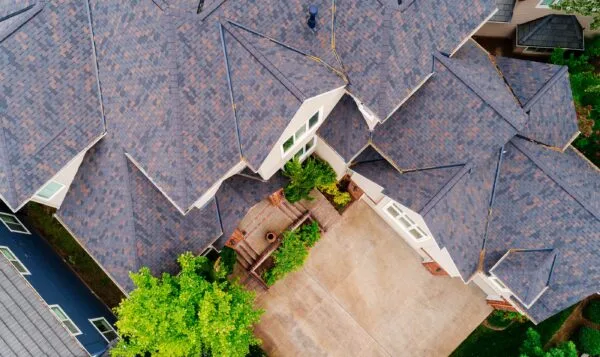Tile roofs and asphalt shingle roofs have long been compared for their performance, durability, and aesthetic appeal. Homeowners often find themselves trying to decide which option best suits their needs, budget, and architectural preferences. To make an informed decision, it is crucial to understand the key differences and benefits of each roofing material. In this paragraph, we will delve into the advantages and disadvantages of tile and asphalt shingle roofs, as well as factors that may influence a homeowner’s choice between the two.
These two types of roofs differ in several different ways and may not be suitable for every home. Tile roofs are known for their durability, often lasting 50 years or more, and their ability to withstand harsh weather conditions, including high winds and hail. On the other hand, asphalt shingle roofs are generally more affordable and easier to install, making them a popular choice for homeowners on a budget or in need of a quick roof replacement.

Factors such as climate, architectural style, and homeowner priorities play a significant role in determining the most suitable roofing material for a given home. Read below for a breakdown of two of the two most popular roofing options there are in the market and decide for yourself which one is the best option for your home.
What are Asphalt Shingles
Asphalt shingles are a widely used roofing material, known for their versatility and cost-effectiveness. They are made from a combination of organic or fiberglass materials, coated with asphalt and embedded with granules to provide protection against the elements. Available in numerous colors and styles, asphalt shingles offer homeowners the opportunity to customize the appearance of their roof while enjoying a low upfront cost. However, it is important to note that while more affordable, asphalt shingles have a shorter lifespan than tile roofs, with an average life expectancy of about 30 years.
What are Tile Roofs

Tile roofs have earned a reputation for their durability and distinctive appearance, particularly in Mediterranean or Spanish-style architecture. Made primarily from clay or concrete, these tiles are designed to overlap, creating an interlocking system that effectively sheds water and provides strong resistance to harsh weather. Despite their higher initial cost and heavier weight, which may require reinforced roof framing, tile roofs can last over a century with proper maintenance. Homeowners who opt for tile roofs benefit from enhanced protection, energy efficiency, and the opportunity to make a bold architectural statement.
Concrete Tile Roof vs Asphalt Shingles, What is the Difference?
The difference between these two types of roofs extends beyond their materials, cost, and appearance. When considering the overall performance, homeowners must also consider factors such as energy efficiency, maintenance requirements, climate, and longevity.
Durability
In terms of durability, both tile and asphalt shingle roofs have their strengths and weaknesses. While tile roofs are renowned for their longevity and resistance to extreme weather conditions, they can be susceptible to cracking or breaking if subjected to significant impacts. Asphalt shingles, on the other hand, may not last as long as their tile counterparts but are easier and more affordable to repair or replace.
Styles & Appearance
When it comes to aesthetics, both tile and asphalt shingle roofs offer a wide range of styles and appearances to complement various architectural designs. Tile roofs are notably known for their classic, elegant look, especially when paired with Mediterranean, Spanish, or Mission-style homes.
In contrast, asphalt shingles provide a more versatile design, available in assorted colors, textures, and patterns, which can accommodate a broader range of architectural preferences. The choice between these two roofing materials will depend on the homeowner’s personal taste and the desired look for their home.
Energy Efficiency
In addition to aesthetics, energy efficiency is a crucial consideration when selecting a roofing material. Tile roofs have a natural ability to insulate, keeping homes cooler in the summer and warmer in the winter, thus reducing energy consumption and lowering utility costs.
Asphalt shingles, too, offer insulation benefits for homeowners. Modern developments in asphalt shingle technology have led to increased energy efficiency, with some shingles incorporating reflective granules that reduce solar heat gain. Consequently, asphalt shingle roofs can help maintain a comfortable indoor temperature, potentially leading to lower energy bills. The insulation performance of asphalt shingles and tile roofs may vary, but both options contribute to energy-efficient homes.
Maintenance Requirements
Despite their differences, both tile and asphalt shingle roofs require regular maintenance to maximize their performance, longevity, and curb appeal. Tile roof maintenance usually involves inspecting and cleaning the tiles, ensuring proper drainage, and replacing any damaged or cracked pieces.
In contrast, asphalt shingle roofs may require homeowners to monitor granule loss, replace damaged or missing shingles, and ensure adequate ventilation in the attic space. By prioritizing roof maintenance, homeowners can extend the life of their roofing materials and protect their investment for years to come.
Acceptable Climates
Both tile and asphalt shingle roofs possess specific characteristics that make them more suitable for certain climates. Tile roofs, with their high resistance to heat and natural ability to insulate, are an excellent choice for homes located in hot, sunny regions such as Southwestern states and Southern California.
Conversely, asphalt shingles are a popular option for homeowners living in colder environments, as their flexibility enables them to better withstand fluctuating temperatures and prevent ice damming. When choosing between these two roofing materials, it is essential to consider the local climate and select the option that best suits your home’s environmental conditions.
Architecture Differences
While both tile and asphalt shingle roofs can adapt to various architectural designs, there are distinct architectural differences between the two. Tile roofs, with their heavy weight and sturdy construction, require a well-engineered support system to accommodate their distinct layout and to distribute the load evenly across the roof structure.
Asphalt shingle roofs, on the other hand, entail less support framework due to their lighter weight, allowing for a more straightforward installation process. Therefore, homeowners should consult with a knowledgeable contractor to evaluate the compatibility of their homes’ structural components when deciding between these two roofing materials.
Longevity
Tile roofs boast remarkable durability, often lasting anywhere from 50 to 100 years or more, a testament to their robust construction and ability to withstand various weather conditions. However, the underlayment does need to be replaced every 20-30 years. This is a quite simple replacement where the tiles are taken off the roof and the underlayment is replaced and the original tiles are put back on.
In comparison, asphalt shingle roofs have a shorter lifespan, typically 30 years, depending on the quality of the shingles and the local weather conditions. Consequently, homeowners desiring a long-lasting roofing material may prefer tile roofs for their superior longevity. However, it is crucial to factor in other considerations such as maintenance requirements, climate suitability, and architectural compatibility when making the final decision between tile and asphalt shingle roofs.
Environmental Impact
Tile roofs are often considered a more environmentally friendly option due to their sustainable materials, insulating properties, and lengthy lifespan. The natural clay or concrete used in tile production can be recycled, reducing waste, and contributing to a circular economy. Additionally, the superior insulating qualities of tile roofs can lead to decreased energy consumption, lowering a home’s overall carbon footprint. By opting for a tile roof, homeowners can not only enhance their home’s performance but also make a positive environmental impact.
Cost Differences
Asphalt shingle roofs tend to be more cost-effective than tile roofs, both in terms of material costs and installation expenses. Homeowners on a tight budget may find asphalt shingles to be an appealing choice due to their affordability, while still providing sufficient protection against various weather conditions.
However, it is essential to acknowledge that while the initial investment may be lower for asphalt shingle roofs, the longer lifespan and lower maintenance requirements of tile roofs can potentially offset their higher upfront cost.
Signs you may Need a Roof Replacement
As a homeowner, recognizing the signs that indicate a need for a removal and replacement of a roof is crucial to maintain your home’s integrity and prevent further damage. Some common red flags include damaged or missing shingles, persistent leaks, and granule loss on asphalt shingles. Additionally, if your roof has reached the end of its expected lifespan or exhibits visible sagging, it may be time to consider replacing it with a new, durable roof with DaBella and GAF asphalt shingles or Boral Concrete tile roofs.
Shingle Roof vs Tile Roof, Which is Best for Your Home?
The decision between a shingle roof and a tile roof will depend on a variety of factors specific to your home and personal preferences. It is essential to carefully evaluate the initial costs, longevity, maintenance needs, climate suitability, and environmental impact of each option. Consult with a roofing expert like DaBella to assess the compatibility of your home’s structure and overall aesthetics to make an informed decision. With proper research and expert advice, you can select the roofing material that best suits your needs, ensuring a lasting and reliable shelter for years to come.
DaBella is Your Go-to Asphalt Shingle and Tile Replacement Contractor
DaBella is the GAF Master Elite Certified Roofing Contractor and Boral Roofing contractor of choice for any roofing project. With a commitment to excellence, DaBella prides itself on being a GAF Master Elite Certified Roofing Contractor and Boral Roofing contractor, ensuring you receive top-quality materials and service for your roofing project. Our team of professionals possesses the knowledge and expertise required to guide you through the selection process, helping you make the best decision for your home’s unique needs. By choosing DaBella, you can expect unmatched workmanship, attention to detail, and a dedication to customer satisfaction that extends beyond installation. Trust in our expertise to provide you with a durable, high-performing roof that will protect your home and serve you well for years to come.
In expanding our services, DaBella has ensured that clients across several regions can access quality roof replacements tailored to their specific needs. As of now, our company offers roof replacements in all our locations, and for those interested in tile roof replacements, we have services available in San Diego, California; Phoenix, Arizona; and Chandler, Arizona. By reaching a diverse clientele across these locations, homeowners can take advantage of our expertise and commitment to preserving the integrity of their homes. DaBella’s growth is indicative of our dedication to offering exceptional roofing solutions to an ever-increasing number of satisfied customers, solidifying our reputation in the industry.
Contact DaBella today at 844-DaBella to schedule your free no-obligation estimate on your next roof replacement project!

